Introducing The Latest My Class Features
by Sue Waters
Last updated on April 29, 2020
We’re excited to announce the latest improvements to My Class!
My Class is our tool to help manage students, course blogs, moderation, and templates.
1) Student name in Class Blog List
2) More Control Over Students’ Dashboard
4) Attach to Class using Batch Create
5) Class and student blog reports
6) Batch Add or Remove From Class blog
1) Student name in Class Blog List
We added the display of the student name to the Student blog list to make it easier to find students blog. The student name is listed at the top of their blog information.
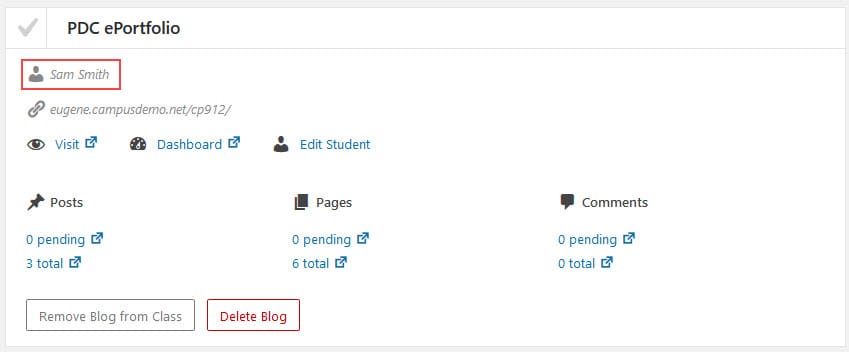
2) More Control Over Students’ Dashboard
We added student permissions in addition to student moderation and privacy options in My Class > Settings for greater control of what your students can do.
For example, if you unselect Switch themes it means your students can customize their theme but can’t change to a new theme. Unselecting Add/Edit Posts and Add/Edit Pages locks down your student blogs preventing new content from being added.

3) Default Blog Template
You can now set a default blog template in My Class > Settings so that all student blogs created using My Class > Create Student blogs have the same appearance and customized content in posts and pages. Follow our support documentation to set up your blog template.
To display a list of template blogs in My Class > Settings you need to set up blog template categories as follows:
1. Go to Blog Template > Template Categories in the network admin dashboard.
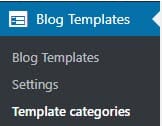
2. Add the template category name, category description and select if you want ‘Allow teachers to choose a template from this category as a default for new student blogs’ or use the template on your sign up page then click Add Category.
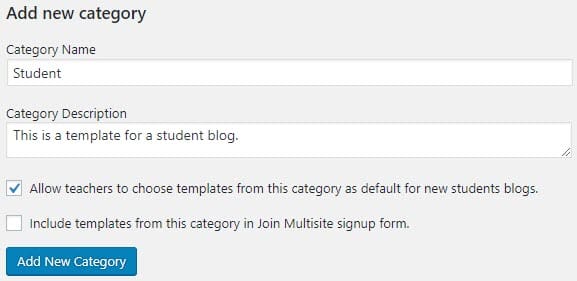
3. When you create a new template blog in Blog Templates > Blog Templates you’ll see an option to assign a template to a template category.
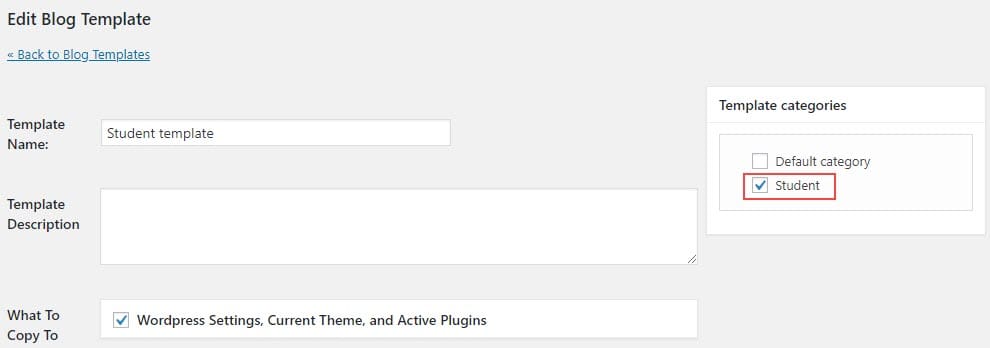
With the student template category selected a teacher now sees a default blog template they can select from in My Class > Settings and this template is applied to all student blogs when the blog is created using My Class > Create student blogs or Users > Invite Users.
4) Attach to Class blog Using Batch Create
You are now able to create and attach new student blogs to a class blog using Batch Create. My Class must be set up on the class blog using My Class > Create Class before it can be used as a Class blog.
The final step in Batch Create if My Classes is network activated is an option to connect student blogs to a class blog.
You connect to the class blog as follows:
Add the class blog ID by searching using the blog path. When you type in the blog path into the ‘search by blog path’ field it automatically searches for the blog URL.
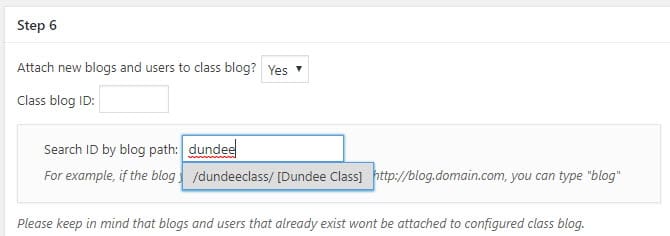
Refer to our support documentation for Batch Create for more information.
Back to top
5) Class and Student Blog Reports
You can now download a report that lists all your class blog URLs as follows:
1. Go to Dashboard > Scripts > Usage Reports in network admin.
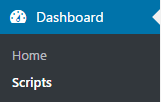
2. Select Option from Index additional data and add Is_class

- For networks that host over 10,000 sites, we recommend you index in 1-2 year date ranges and download a series of reports.
3. Click Run Index to Generate Report.
4. Once you’ve finished indexing you click to download the Options Usage list to obtain a list of the class blog.
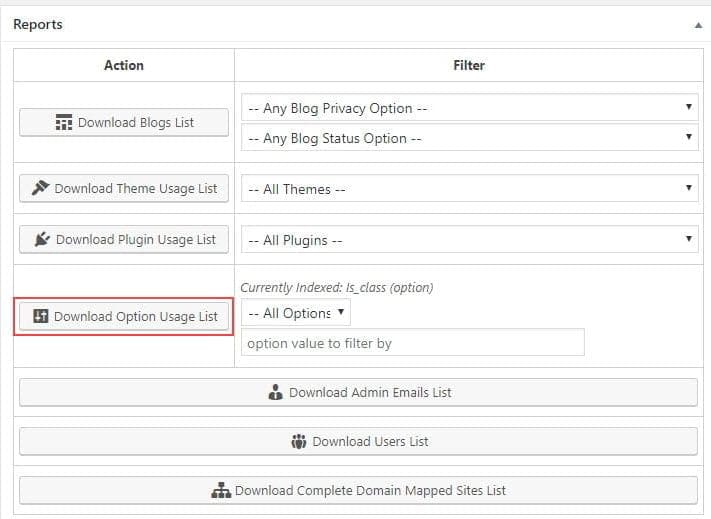
You run a new report to obtain a list of student blogs attached to the class blogs via My Class as follows:
1. Click on Clear Index.
2. Select Option from Index additional data and add class_blog
![]()
3. Click Run Index to Generate Report.
4. Once you’ve finished indexing you click to download the Options Usage list to obtain a list of the student blogs.
The student blog ID is listed in Column A under ID and the Class blog ID the student blog is attached to is listed in Column E under Data.

You can cross reference the Student blog data with the Class blog data to identify the class blog URL or search sites using the class blog ID.
Site search in network admin using blog ID 6 returns the following class blog URL.
6) Batch Add or Remove from Class blog
You are now able to either batch add a list of existing student blogs to a class blog and bulk remove student blogs from a class blog using Batch Edits in network admin.
You add student blogs to a class blog as follows:
1. Go to Dashboard > Scripts > Batch Edits in network admin.

2. Add the blognames, blog IDs or the blog URLs of the student blogs you want to attach to the class blog via My Class.
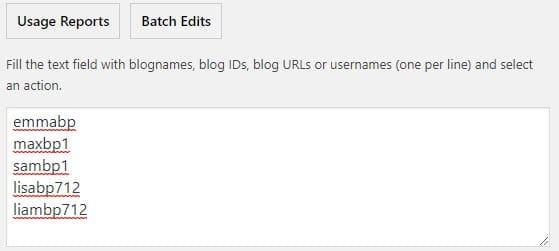
3. Select Attach blogs to class from Actions drop-down menu and add the class blog ID.
![]()
4. Add the class blog ID by searching using the blog path. When you type in the blog path into the ‘search by blog path’ field it automatically searches for the blog URL.

- My Class must be set up on the class blog using My Class > Create Class before it can be used as a Class blog.
- If the student blogs are already attached to a class blog you need to first remove their blogs from that class blog before you can add their blogs to a new class blog.
Once it has found the blog URL click on URL to add the blog ID.

5. Click Submit.
You remove student blogs from a class blog as follows:
1. Go to Dashboard > Scripts > Batch Edits in network admin.
2. Add the blognames, blog IDs or the blog URLs of the student blogs you want to remove from a class blog.

3. Select Attach blogs to class from Actions drop-down menu.

4. Click Submit.
Back to top
7) Invite Users Improvements
Student blogs are automatically attached to the class blog if either existing users or new users create their student blogs using Invite code. Invite code is created in Users > Invite Users.
You can also categorize blog templates to enable users to select from template blogs when a user creates their blog using Invite code as follows:
1. Go to Blog Template > Template Categories in the network admin dashboard.

2. Add the template category name, category description and select if you want ‘Allow teachers to choose a template from this category as a default for new student blogs’ or use the template on your sign up page then click Add Category.

3. When you create a new template blog in Blog Templates > Blog Templates you’ll see an option to assign a template to a template category.

4. Go to Settings > Join Multisite

5. Scroll down and select New blog templates.

6. Click Save.
7. With the student template category selected the users now see options to select a blog template when they create a new site using Invite code (created in Users > Invite Users).
Back to top
8) Super teacher role
The super teacher role has been added to My Class for those situations where you have a large number of teachers that need to be able to view and manage multiple class blogs. A super teacher is able to access all class and student blogs without being added as a user to each class blog.
You assign the super teacher role as follows:
1. Go to Settings > Classes in network admin.
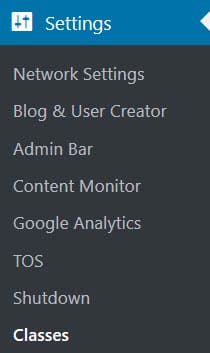
2. Add their user IDs separate by commas.

3. Click Save.
We’re Here To Help
We’re excited about the benefits of these new features for all of our customers and the faculty, staff, and students that use it daily. Our team is here to talk through any and all questions. Leave a comment to let us know other features you would like added or if you would like to schedule a webinar to learn more.

